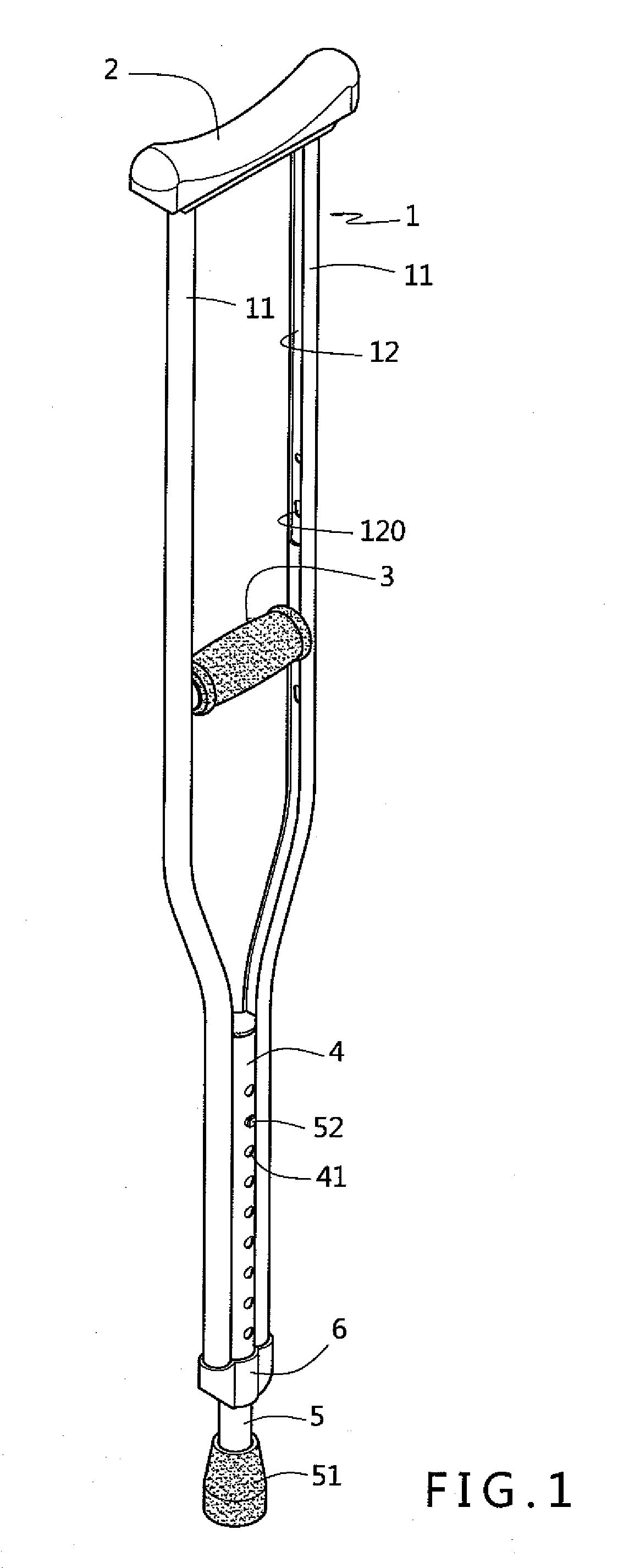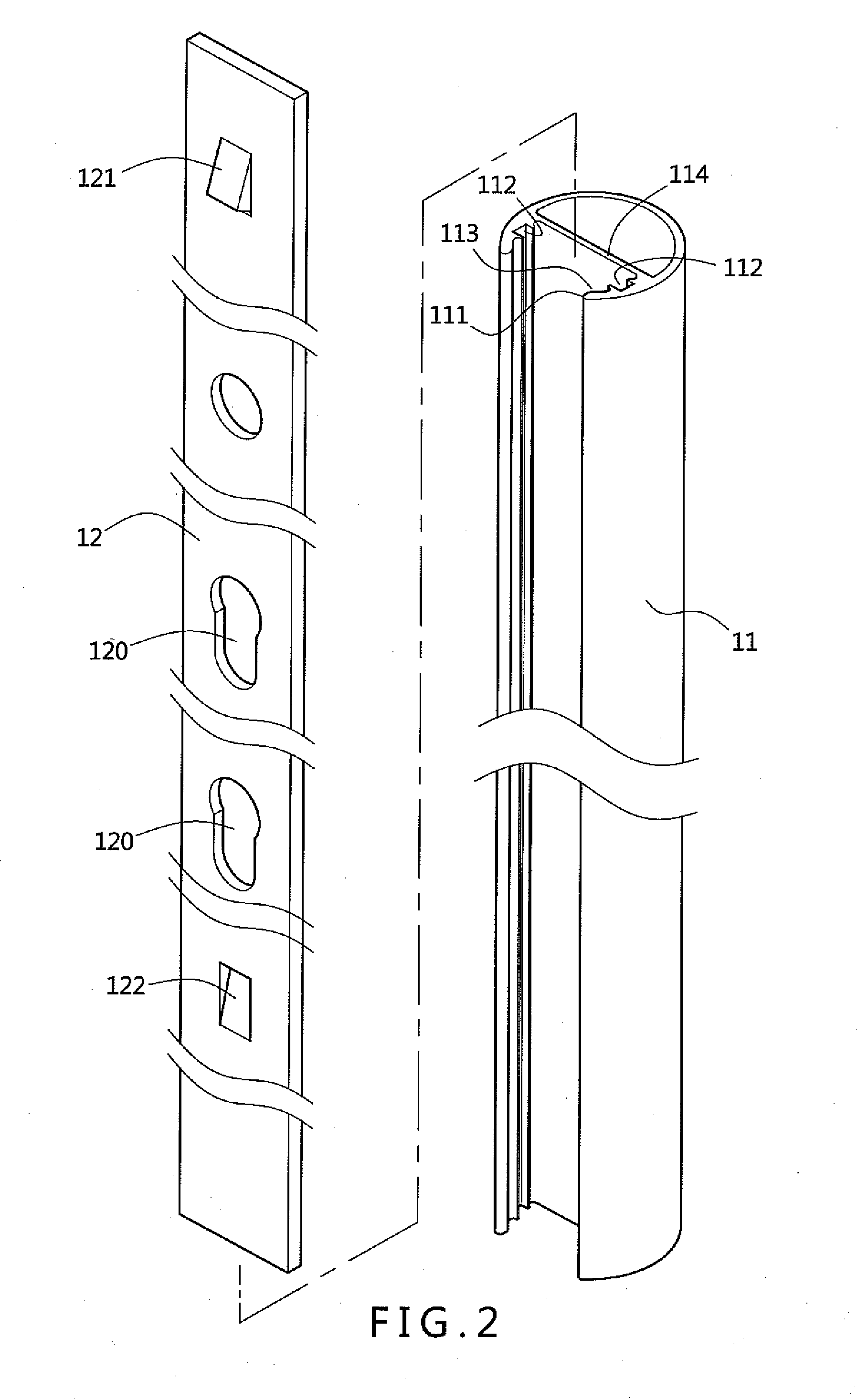Reinforced axillary crutch with adjustable handgrip
a technology of axillary crutches and handgrips, which is applied in the field of axillary crutches, can solve the problems of increasing the cost of making such crutches, compromising the structural strength of the shafts at such locations, and prone to bending or even breaking conventional axillary crutches, so as to enhance the assembly and reinforce the shafts. the effect of strength
- Summary
- Abstract
- Description
- Claims
- Application Information
AI Technical Summary
Benefits of technology
Problems solved by technology
Method used
Image
Examples
Embodiment Construction
[0024]Referring to FIG. 1; the axillary crutch according to the invention includes a body 1 with a shoulder support 2 disposed on top of the body 1 for supporting users under the armpit; a lower tube 5 is disposed at a lower end of the body 1 that may be slid to adjust for positioning and leaning against the ground; a handgrip 3 is disposed in the middle of the body 1 for users to hold onto, wherein:
[0025]As shown in FIG. 2, the body 1 comprises two opposing shafts 11, and the two shafts 11 are disposed in parallel with an upper distance therebetween being wider and a lower distance therebetween being narrower; one side of each shaft 11 is formed with a slit 111 for receiving a handgrip 3, and two fastening grooves 112 are oppositely disposed on two lateral walls within the slit 111 of each shaft 11, respectively; a wall portion 12 made of a fortified material is disposed between the two fastening grooves 112, so that a sliding groove 113 that is wider interiorly and narrower exteri...
PUM
 Login to View More
Login to View More Abstract
Description
Claims
Application Information
 Login to View More
Login to View More - R&D
- Intellectual Property
- Life Sciences
- Materials
- Tech Scout
- Unparalleled Data Quality
- Higher Quality Content
- 60% Fewer Hallucinations
Browse by: Latest US Patents, China's latest patents, Technical Efficacy Thesaurus, Application Domain, Technology Topic, Popular Technical Reports.
© 2025 PatSnap. All rights reserved.Legal|Privacy policy|Modern Slavery Act Transparency Statement|Sitemap|About US| Contact US: help@patsnap.com



